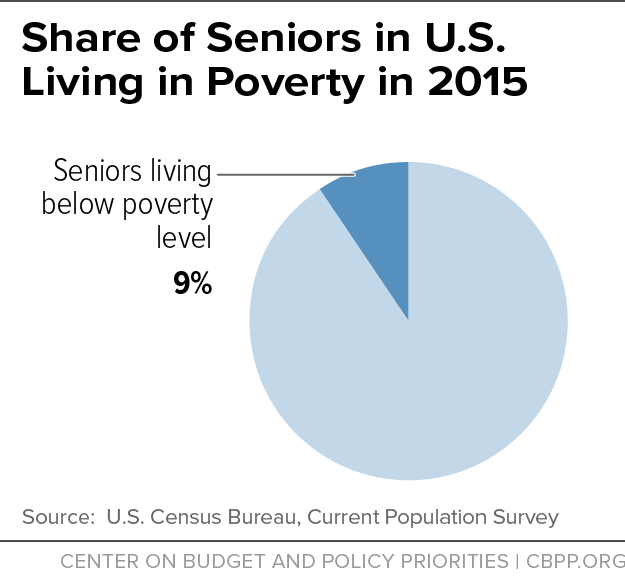SNAP Helps Millions of Low-Income Seniors
End Notes
[1] Census Bureau, 2016 Current Population Survey’s Annual Social and Economic Supplement.
[2] Seniors are defined as individuals aged 60 years and older, unless otherwise noted.
[3] Kelsey Farson Gray, Sarah Fisher, and Sarah Lauffer, “Characteristics of Supplemental Nutrition Assistance Program Households: Fiscal Year 2015,” prepared for the Food and Nutrition Service, USDA, November 2016, https://www.fns.usda.gov/snap/characteristics-supplemental-nutrition-assistance-households-fiscal-year-2015.
[4] Ibid.
[5] Bureau of Labor Statistics, “Consumer Expenditures in 2014,” Department of Labor, October 2016, https://www.bls.gov/opub/reports/consumer-expenditures/2014/home.htm.
[6] Alisha Coleman-Jensen et al., “Household Food Security in the United States in 2015,” Economic Research Service, USDA, September 2016, https://www.ers.usda.gov/publications/pub-details/?pubid=79760. Seniors are defined in this report as individuals aged 65 years and older.
[7] Alisha Coleman-Jensen et al., “Statistical Supplement to Household Food Security in the United States in 2015,” Economic Research Service, USDA, September 2016, https://www.ers.usda.gov/publications/pub-details/?pubid=79430. Seniors are defined in this report as individuals aged 65 years and older.
[8] National Foundation to End Senior Hunger (2014), “Spotlight on Senior Health: Adverse Health Outcomes of Food Insecure Older Americans,” March 2014, http://www.nfesh.org/wp-content/uploads/2013/03/SeniorLiteratureReport-Final-Draft.pdf.
[9] Census Bureau, 2008 and 2016 Current Population Survey’s Annual Social and Economic Supplements.
[10] Census Bureau, 2008 and 2016 Current Population Survey’s Annual Social and Economic Supplements.
[11] Census Bureau, 2014 National Population Projections.
[12] Kelsey Farson Gray and Karen Cunnyngham, “Trends in Supplemental Nutrition Assistance Program Participation Rates: Fiscal Year 2010 to Fiscal Year 2014,” Department of Agriculture, Office of Policy Support, June 2016, https://www.fns.usda.gov/snap/trends-supplemental-nutrition-assistance-program-participation-rates-fiscal-year-2010-fiscal-year.
[13] James Ziliak and Craig Gundersen, “Food Insecurity Among Older Adults,” AARP Foundation, August 2011, http://www.aarp.org/content/dam/aarp/aarp_foundation/pdf_2011/AARPFoundation_HungerReport_2011.pdf.
[14] Census Bureau, 2011-2015 American Community Survey 5-Year Estimates.
[15] Ibid.
